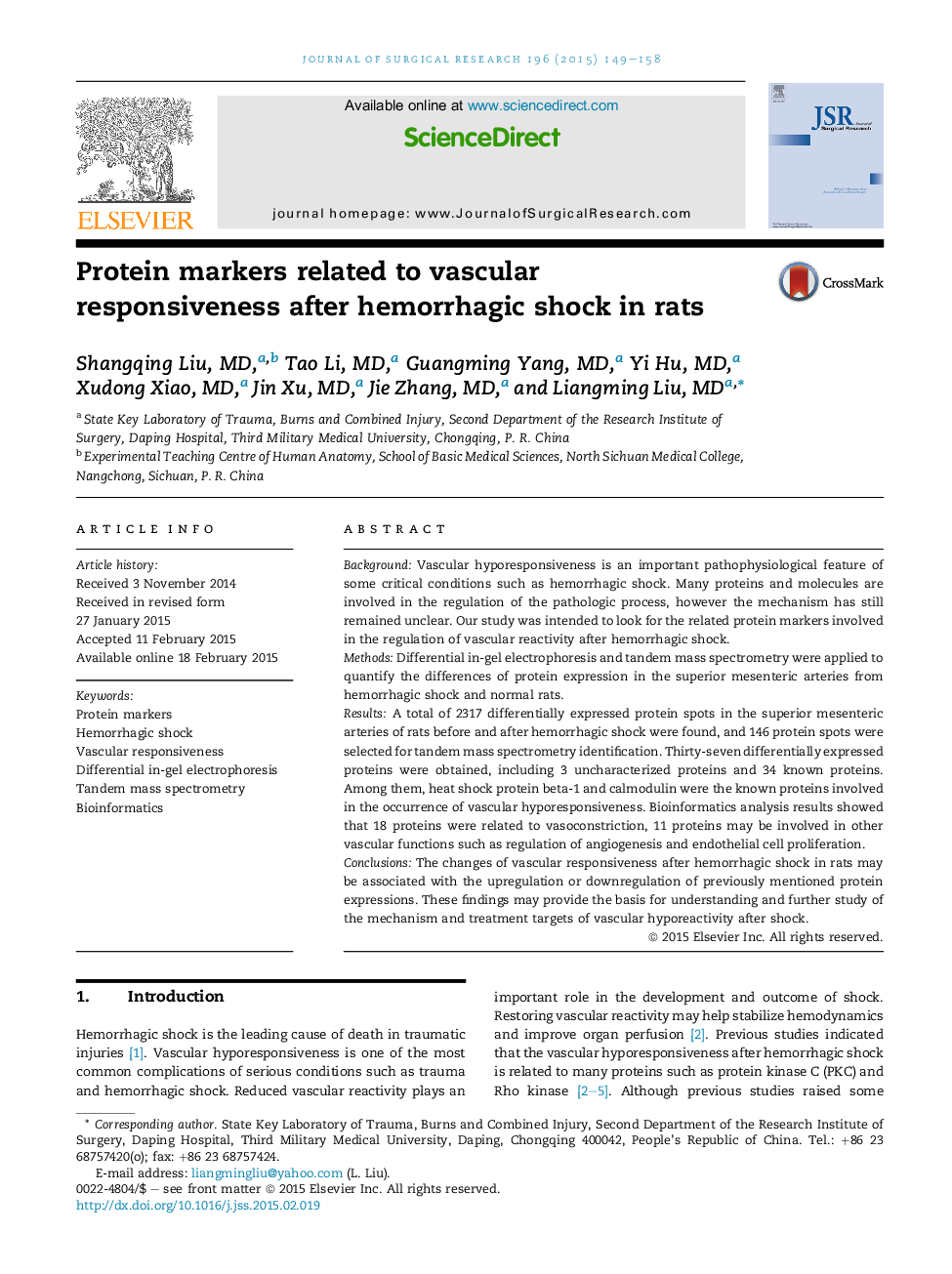| کد مقاله | کد نشریه | سال انتشار | مقاله انگلیسی | نسخه تمام متن |
|---|---|---|---|---|
| 4299974 | 1288406 | 2015 | 10 صفحه PDF | دانلود رایگان |
BackgroundVascular hyporesponsiveness is an important pathophysiological feature of some critical conditions such as hemorrhagic shock. Many proteins and molecules are involved in the regulation of the pathologic process, however the mechanism has still remained unclear. Our study was intended to look for the related protein markers involved in the regulation of vascular reactivity after hemorrhagic shock.MethodsDifferential in-gel electrophoresis and tandem mass spectrometry were applied to quantify the differences of protein expression in the superior mesenteric arteries from hemorrhagic shock and normal rats.ResultsA total of 2317 differentially expressed protein spots in the superior mesenteric arteries of rats before and after hemorrhagic shock were found, and 146 protein spots were selected for tandem mass spectrometry identification. Thirty-seven differentially expressed proteins were obtained, including 3 uncharacterized proteins and 34 known proteins. Among them, heat shock protein beta-1 and calmodulin were the known proteins involved in the occurrence of vascular hyporesponsiveness. Bioinformatics analysis results showed that 18 proteins were related to vasoconstriction, 11 proteins may be involved in other vascular functions such as regulation of angiogenesis and endothelial cell proliferation.ConclusionsThe changes of vascular responsiveness after hemorrhagic shock in rats may be associated with the upregulation or downregulation of previously mentioned protein expressions. These findings may provide the basis for understanding and further study of the mechanism and treatment targets of vascular hyporeactivity after shock.
Journal: Journal of Surgical Research - Volume 196, Issue 1, 1 June 2015, Pages 149–158
